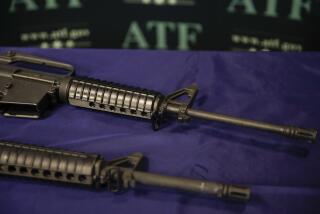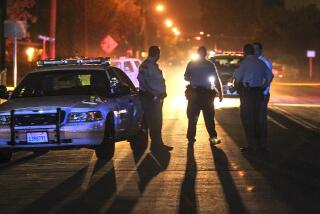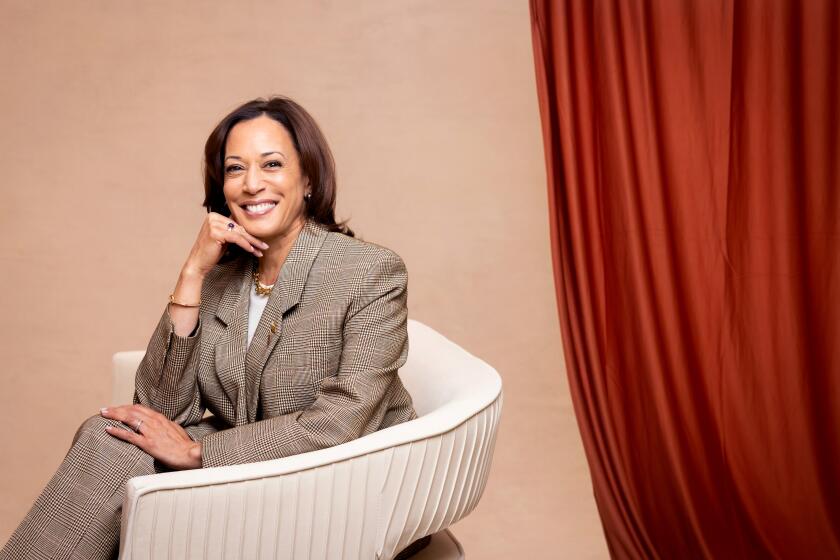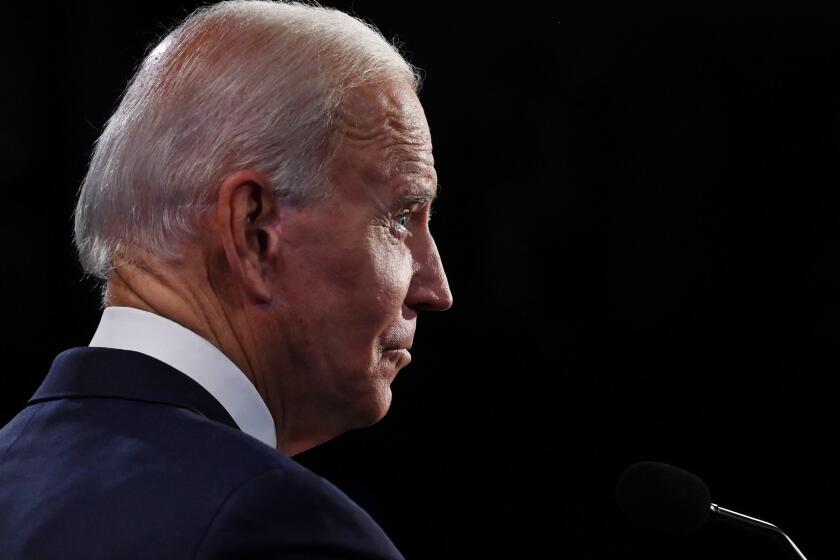The shooting victim who took down cheap gun makers
WILLITS, Calif. — We’ve heard a lot in this post-Newtown moment about how California leads the nation in gun laws. But you probably haven’t heard the unlikely story of Brandon Maxfield, a quadriplegic 26-year-old who helped drive a notorious segment of California’s gun industry toward extinction.
“It wouldn’t have happened without him,” said Garen Wintemute, a UC Davis professor of emergency medicine whose anti-gun advocacy has made him a firearms industry nemesis.
In 1994, at the age of 7, Brandon was accidentally shot through the neck with a .380-caliber semiautomatic pistol. The pistol belonged to Brandon’s parents, who kept it in an unlocked drawer.
A 12-year-old relative had found it, and a 20-year-old family friend, who was watching the kids for Brandon’s mother, tried to unload it. The gun discharged, grievously wounding Brandon, who was not expected to live.
Twelve surgeries later, here is Brandon, his moon face framed by a black Linkin Park hoodie, speaking slowly and deliberately as he lies on a gurney at a hotel where we met.
“My time is gonna be up before most people,” he said. “And I’m OK with that.”
He can barely move an arm. He doesn’t walk. He requires a ventilator to breathe through the night. Brandon takes a pharmacy worth of medication, including antidepressants for the terrible nightmares he has about his parents dying.
But there is much joy in this young man’s life: He loves video games, movies, “The Lord of the Rings” and tattoos. He adores his baby nephew. Last year, he took a cruise to Hawaii. He even had a brief marriage. He memorialized the breakup with a tattoo on his chest: A dragon protectively clutching a red heart, with the script: “Don’t Even Try It.”
“Even though it didn’t work out,” said his mother, Sue Stansberry, “he got to do something everybody else gets to do.”
Putting a straw to Brandon’s lips so he can sip coffee, Stansberry, in a black leather Harley-Davidson jacket, said through tears that she’s still consumed by guilt. “I trusted that gun for our safety. It ruined our life.”
The gun was made by Bryco Arms, once a leading Southern California maker of the cheap handguns known as Saturday Night Specials. Bryco was part of the “Ring of Fire,” a phrase coined by Wintemute to describe the handful of gun makers related by blood, marriage or friendship whose factories lay in a crescent around Los Angeles, from Valencia to Costa Mesa.
Ring of Fire guns — from Bryco, Jennings, Lorcin, Raven, Phoenix — flooded the market in the ‘70s, ‘80s and ‘90s. Often called “junk guns,” they were the subject of many lawsuits, but probably none with as much impact as the one filed by Brandon and his Bay Area attorney Richard Ruggieri.
In the 2003 trial, Ruggieri alleged that Bruce Jennings, the owner of Bryco, had covered up a jamming problem in the company’s Model 38, the gun that wounded Brandon. When the safety was on and the slide was pulled back to check for a bullet, the gun would jam.
Rather than spend a nickel per gun to fix the flaw, Bryco rewrote the gun’s instructions, telling users to remove the safety before pulling back the slide. As Ruggieri likes to say, that’s like removing your seat belt just before a crash.
An Oakland jury awarded Brandon $24 million from Bryco and Jennings. Others were also found at fault to a much lesser degree — his parents, the owners of the shop that sold the gun, the young man who shot Brandon.
Jennings, who dropped his liability insurance, closed Bryco, declared bankruptcy and left the state. That was pretty much it for the Ring of Fire. The total number of handguns produced in California, according to the federal Bureau of Alcohol, Tobacco, Firearms and Explosives, has plummeted from more than 228,000 in 1998 to 22,315 in 2011.
In Florida, Jennings was able to shelter his money and assets under the state’s homestead laws. “He has a million-dollar home we can’t touch,” Ruggieri said.
Brandon did recover about $8 million — from insurance companies associated with a gun distributor, and from one of Jennings’ ex-wives. He was able to buy a home and a custom van. But his estimated lifetime medical costs far exceed that amount, and he has no way to collect.
“When I met Brandon, he was confined on his back in a bed, with no doorways in their trailer wide enough for his wheelchair,” Ruggieri said. “Now he has a vehicle and an electric wheelchair. His life has improved substantially by getting those basic things.”
Meanwhile, Jennings did not live happily ever after in the Sunshine State. He lost his federal firearms license after breaking his wife’s jaw. In January, he pleaded guilty in federal court to possessing and distributing child pornography and is facing up to 30 years in prison.
Many gun enthusiasts were unhappy to see the Ring of Fire extinguished. Steve Coffman, 32, a salesman in Olympia, Wash., thinks the companies were unfairly driven out of business. He often carries a Bryco gun and belongs to an online forum of Ring of Fire gun collectors. “They’re still out there and widely sold.”
But they are harder to get, which bothers Lawrence Keane, senior vice president and general counsel of the National Shooting Sports Foundation. “Product selection for consumers in California is less than it is in other states because of California’s restrictions. Over time, unfortunately, California will become to firearms what Cuba is to cars,” he said, alluding to the embargo that has choked off Cuba’s access to shiny new American cars.
In California, where gun ownership is among the lowest in the nation, that’s not a fate most folks would bemoan.
More to Read
Sign up for Essential California
The most important California stories and recommendations in your inbox every morning.
You may occasionally receive promotional content from the Los Angeles Times.







